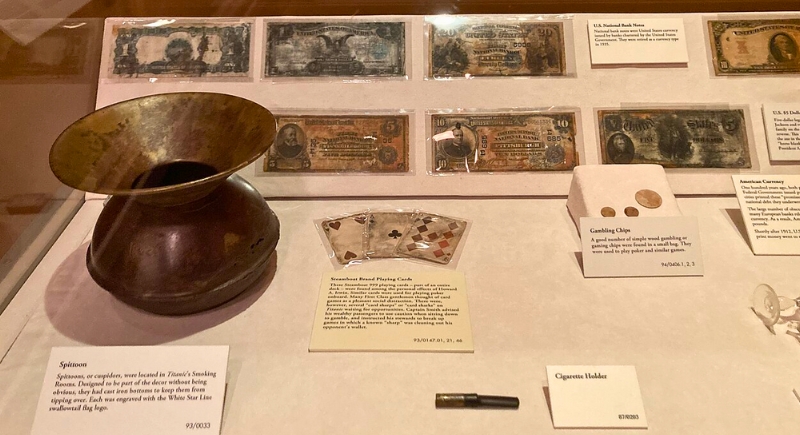A Family Just Sold a Haunting Artifact Belonging to a Titanic Victim
A pocket watch once carried by a Titanic victim has been sold at auction and renewed attention on the personal relics left behind from the tragedy. It belonged to Sinai Kantor, a second-class passenger who did not survive the sinking. The watch was recovered with his body and later returned to his widow as a haunting reminder of their final voyage together.
The Watch That Marked the Final Minutes
The pocket watch stopped at approximately 2:25 a.m.—the same time the Titanic sank into the Atlantic. Though its hands are missing, a stain left by saltwater makes the time visible. The front face of the watch uses Hebrew numerals, and the back is engraved with an image of Moses holding the Ten Commandments. Auctioneers described the item as “frozen in time,” and for good reason. It physically records the moment one life ended, down to the minute.
It also stands out because of its provenance. Kantor’s possessions never sat on the ocean floor or passed through salvage operations. They were returned by the White Star Line and remained with his family for generations until they went up for sale. The watch was auctioned by Henry Aldridge & Son Ltd and estimated to sell for close to $100,000.
A Passenger with a Future Already Planned
Sinai Kantor was a 34-year-old Russian man traveling second class with his wife, Miriam. The couple had recently married and planned to settle in New York. Kantor intended to work as a fur merchant, and both he and Miriam hoped to pursue medical and dental studies in the United States. That plan ended during the early hours of April 15, 1912.
When the Titanic began to sink, Miriam boarded a lifeboat under the “women and children only” rule, while Sinai was left behind. He died in the water, one of over 1,500 people who did not survive. His body was later discovered with several personal belongings: the pocket watch, a notebook, a passport, wallets, a telescope, and a corkscrew.
A Collection with Strong Personal Ties

Image via Wikimedia Commons/
The watch was part of a group of Titanic artifacts recently offered at auction. These things were not pulled from the wreckage or discovered in deep-sea expeditions. They were preserved by families, transferred across generations, and eventually released to the public. In Kantor’s case, the artifacts remained with his widow and descendants for more than a century. That level of documentation adds considerable historical value.
The auctioneer, Andrew Aldridge, explained that interest in Titanic memorabilia often depends on a strong backstory. Physical condition plays a role, but the object’s connection to real people and real events tends to carry more weight. Kantor’s story involved immigration, education, and a life interrupted by disaster. The objects he carried were ordinary in function but meaningful in context.
Other Objects from the Same Auction
The auction also featured other significant artifacts with personal histories. One standout was a wool blanket with a tartan pattern and the White Star Line logo sewn into the fabric. It likely belonged to a survivor who was rescued by the RMS Carpathia. Frederick Toppin, a White Star Line manager, obtained it while meeting passengers disembarking in New York.
Another item was a first-class dinner menu from April 11, 1912. This menu, water-damaged and partially faded, is the only known copy from that specific date. It includes dishes such as tournados of beef à la Victoria and mallard duck in port wine sauce. The menu turned up in Nova Scotia, found inside a 1960s photo album by the family of collector Len Stephenson. After his passing, the family sent it for authentication.
Each of these items connects to the Titanic in a different way, but all were kept intact and offer concrete evidence of individual experiences aboard the ship.